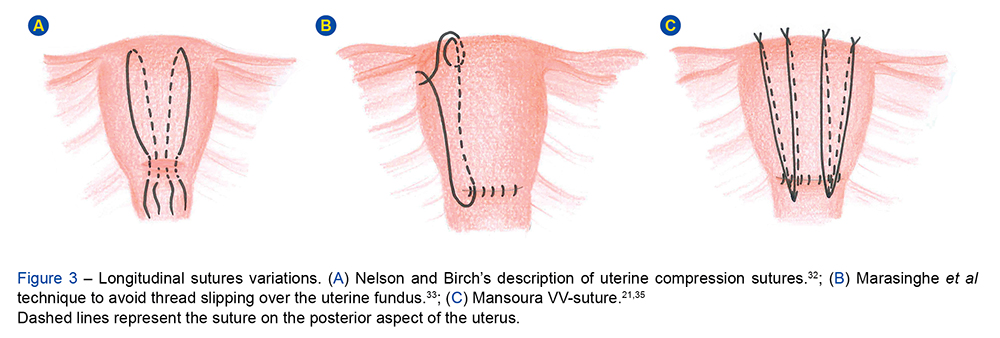SOCIAL MEDIA
Portuguese Medical Association's Scientific Journal

Introduction: Postpartum haemorrhage is still the main cause of maternal morbidity and mortality. Many treatments are available, but they may threaten fertility potential. As a uterine sparing procedure, we aimed to review uterine compression sutures in order to better understand when they should represent an appropriate option.
Material and Methods: A comprehensive search in MEDLINE and PubMed databases including the terms ‘postpartum haemorrhage’ and ‘uterine compression sutures’ was performed. Results were revised and articles reviewing or presenting case reports of uterine compression sutures to treat postpartum haemorrhage were included.
Results: The first description of uterine compression sutures to control postpartum haemorrhage was published in 1997, by B-Lynch et al. After this publication, many others have reported successful management of postpartum haemorrhage with different suturing techniques. Most of them describe success rates above 75% and the possibility of fertility preservation, with cases of uneventful pregnancy after uterine compression sutures already published. Complications associated with each technique are rare.
Discussion: Reports of use of uterine compression sutures include small series of cases or even single case reports which limits the quality of existing evidence to support one technique over another. Nevertheless, uterine compression sutures are recognized as an effective surgical conservative strategy to control postpartum haemorrhage due to uterine atony and its use is recommended, if possible, prior to hysterectomy.
Conclusion: Uterine compression sutures are effective, safe and simple to perform in an emergent situation and preserve fertility potential in cases of postpartum haemorrhage.